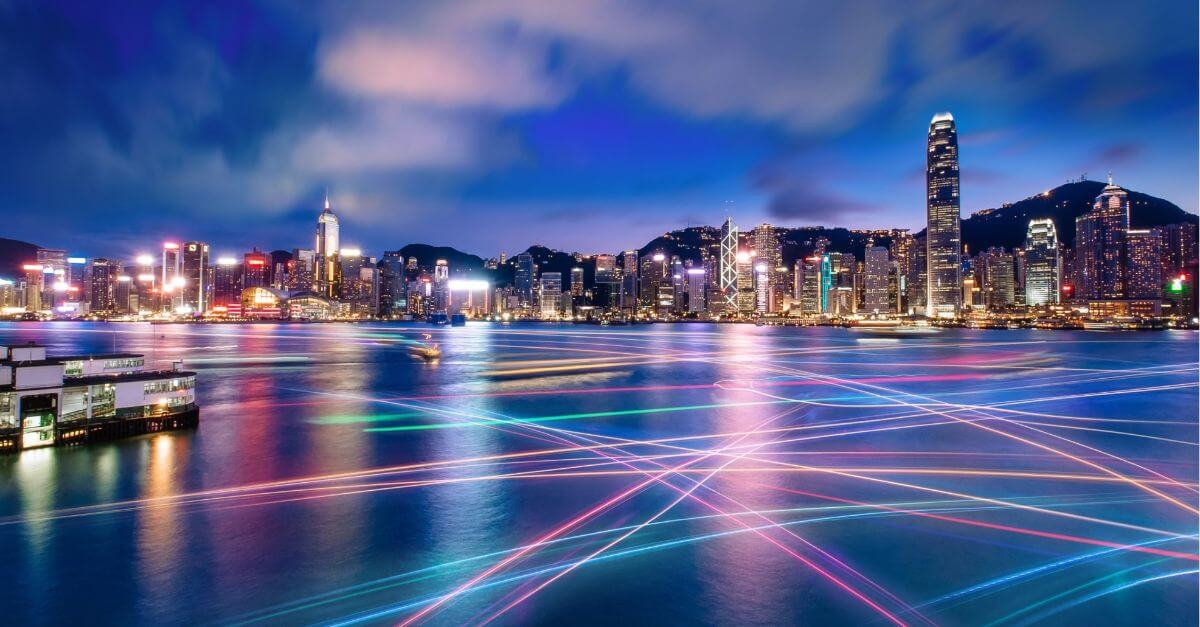Current Market Dynamics
In the difficult global economic environment of H1 2023, global infrastructure investments have displayed impressive resilience, maintaining a relatively stable performance. The EDHEC Infra300® index, which tracks 300 unlisted infrastructure equity investments, totaled a market capitalization of US$320 billion, consistently delivered an 8.15% year-to-date return in H1 2023, compared to a total return of 5.78% for the entire year 2022.[1] This performance underscores the enduring allure of infrastructure investments, characterized by attributes like inflation-linked income, stability and necessity. These qualities have proven invaluable amid the backdrop of volatile financial indices.
The Asia-Pacific (APAC) region continues to maintain its status as an economic powerhouse, with a history of significant contributions to global GDP growth. A robust growth rate of 4.6% is projected for 2023, driven by rapid urbanization and the burgeoning middle class.[2] The Asian Development Bank has projected that the urban population in the region will increase from approximately 2 billion in 2020 to around 3 billion by 2050.[3] To address these substantial challenges and sustain development, it recommends an annual infrastructure investment of US$1.7 trillion until 2030.3
APAC's infrastructure potential has garnered significant attention from institutional investors. Leading private equity firms, as demonstrated by Macquarie, made a significant impact in 2022 by successfully raising over US$4 billion for their third Asia Pacific infrastructure fund, marking a remarkable milestone in the sector.[4]
Diverse Sector Dynamics:
The APAC infrastructure sector presents a spectrum of diversity, offering numerous investment opportunities:
Energy Transition
APAC actively participates in the global shift towards renewable energy sources like solar and wind. Developed nations such as Japan, Australia and South Korea lead with pioneering renewable energy projects, leveraging their technological expertise and substantial financial backing. Simultaneously, emerging economies like Vietnam, India, Indonesia and the Philippines rapidly adopt renewable technologies, attracting significant capital. Singapore's sovereign wealth fund, GIC, has been a pivotal force in advancing the transition to renewable energy in the Asia-Pacific region through its strategic collaboration with ACEN, the renewable energy platform of the Philippines' Ayala Group.[5]
Digital Infrastructure & Technological Advancements
The digital era fuels sectoral growth, encompassing the expansion of high-speed fiber optic networks, the development of cutting-edge smart cities and rollout of 5G networks. Investments in digital infrastructure escalate to meet the insatiable demand for data centers and connectivity solutions. Singapore, with its pioneering smart city initiatives, serves as a prime example of advanced technological integration, illustrating the region's adaptability to global digital trends.
Transportation and Logistics
This sector, consisting of airports, railways, ports and toll roads, plays a pivotal role in trade diversification. Despite grappling with pandemic-induced challenges, it is poised for recovery alongside the resurgence of global trade. APAC's strategic location and infrastructure commitments establish it as a central hub connecting regional and global markets. Indonesia's recent inaugural Southeast Asia high-speed railway project, primarily backed by China under its Belt and Road Initiative, exemplifies this commitment to enhancing transportation networks in the region.[6]
Circular Economy
APAC's circular economy initiatives comprise solid waste (trash) and liquid waste (sewage) management. Thailand and other developing Asia countries are actively engaged in waste-to-energy projects, using advanced foreign technology to convert solid waste into energy in the region. Meanwhile, India's sewage management efforts prioritize safeguarding drinking water sources and environmental preservation, particularly in densely populated areas. APAC countries are actively promoting sustainable waste management to reduce environmental impact and improve resource efficiency.
Outlook and Challenges
Investors face a landscape of growing skepticism, driven by challenges that could impact the appeal of infrastructure investments in the APAC region.
Persistently high interest rates are expected to endure until at least Q3 2024 due to ongoing inflationary pressures. This environment presents a substantial inherent risk to infrastructure investments, potentially leading to reduced asset valuations and total returns. Infrastructure projects heavily rely on stable financing, and the resulting high rates can drive up capital costs, directly impacting overall returns. Furthermore, these sustained interest rates not only inflate financing expenses but also diminish its appeal to investors who may seek higher yields elsewhere.
Infrastructure investments in the APAC region are becoming progressively intricate due to changing regulations and political uncertainties. Governments are actively implementing policies related to sustainability, responsible investing and national security, all of which can have a significant impact on investment decisions and increase compliance complexities.
As we look ahead to 2024, significant elections are scheduled to take place in key markets, including India, Indonesia, Taiwan and South Korea. These elections introduce an added layer of political risk for institutional investors involved in long-term infrastructure projects. Given the substantial capital investments and extended project lifecycles, investors are likely to exercise caution, conducting thorough assessments of political stability and carefully considering risk mitigation strategies before committing to any investments.
In response to these multifaceted challenges, investors approach infrastructure investments in the APAC region with caution and meticulous planning. While the region offers growth and sustainability opportunities, addressing interest rate fluctuations, political uncertainties, and regulatory dynamics requires a strategic approach for achieving desired investment returns.
How SS&C Can Help:
SS&C offers a suite of comprehensive, modular real asset services to a diverse, global client base and has extensive experience supporting the needs of organizations that invest in and manage a broad range of infrastructure investments across the full spectrum of legal entity structures. Ownership of the entire value chain, from the technology and data centers to the processing infrastructure and personnel, provides SS&C with tremendous control over the quality of deliverables to our clients. We build, own and operate our own proprietary, advanced and scalable technology platforms, and also offer the flexibility to work in our clients’ systems.
The end result is a tailored solution to meet the unique requirements of your business while providing scalability, access to expertise, oversight of your property managers and transparency to your data. As a global firm, SS&C operates with a follow-the-sun processing model to leverage time-zone differences and offer responsive, consistent customer service capabilities in any time zone.
Download our "Navigating the New Frontier in Infrastructure Investing" whitepaper to learn more.
References:
[1] EDHEC, Q2 2023 InfraMetrics Data Release: infrastructure flat as macroeconomic environment stabilizes. July 2023
[2] The International Monetary Fund, Regional Economic Outlook for Asia and Pacific, May 2023
[3] Asian Development Bank, Strategy 2030 Urban Sector Directional Guide Summary: Making Cities More Livable in Asia and the Pacific. July 2023
[4] Macquarie, Macquarie Asset Management closes third Asia-Pacific regional infrastructure fund with over $US4.2 billion in commitments, May 2022
[5] GIC, Infrastructure: A resilient Strategy in Uncertain Times, August 2023
[6] BBC, China Belt and Road: Indonesia opens Whoosh high-speed railway, October 2023
[7] The United Nations Conference on Trade and Development, World Investment Report 2023, July 2023
[8] CBRE, Infrastructure Quarterly: Q2 2023, July 2023
Written by Iris Ho
Associate Director Private Markets Group






